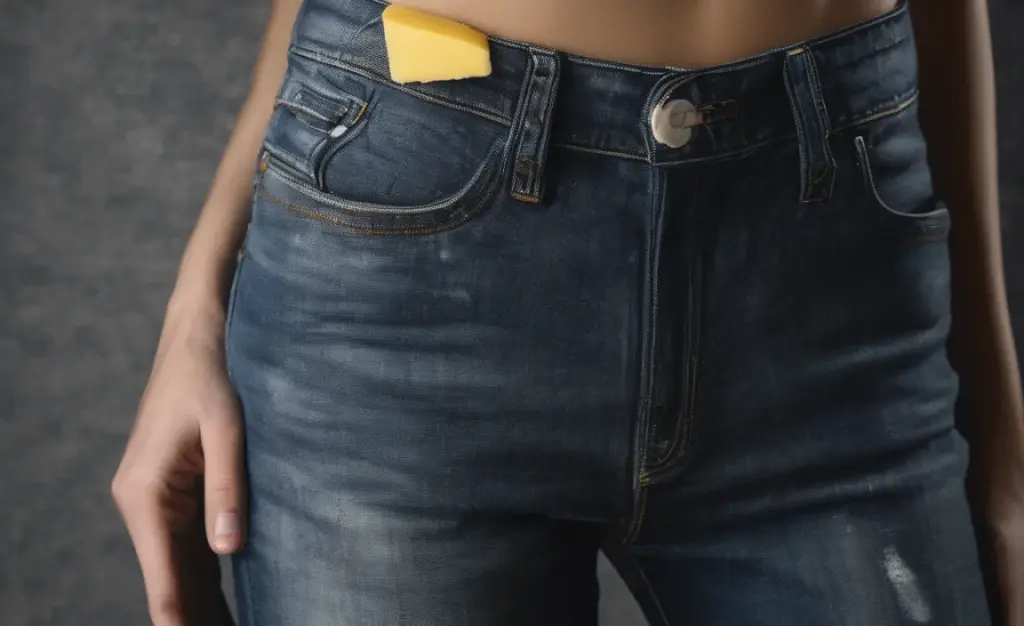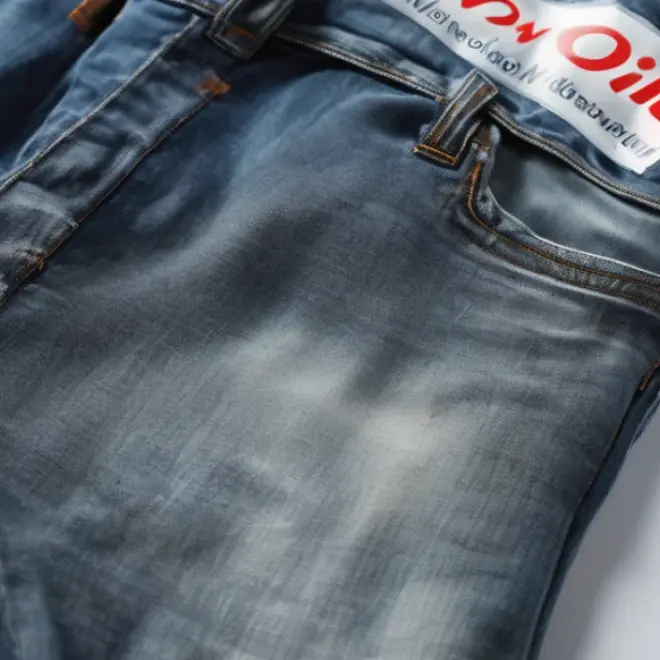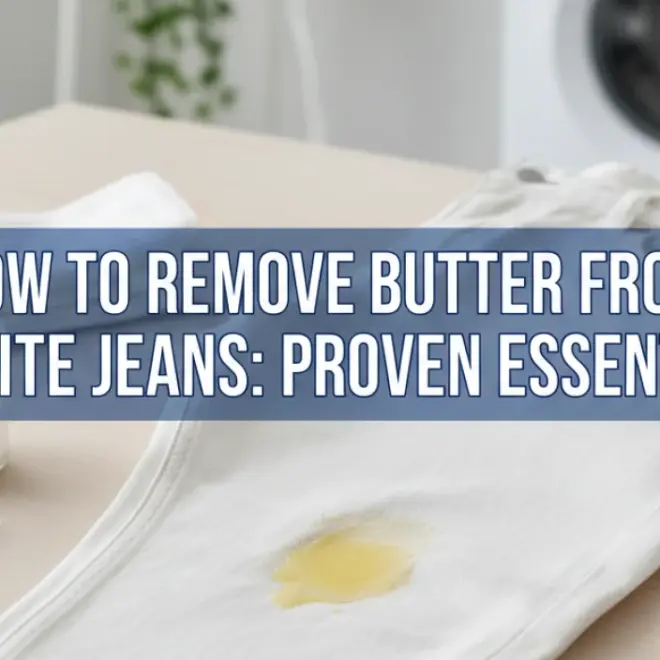If you’ve accidentally stained your favorite dark wash jeans with butter, don’t worry. A few common household items and simple steps can effectively remove the grease stain, restoring your denim without damaging the color. This guide will show you exactly how to tackle butter stains on dark denim, keeping your jeans looking great.
Getting a butter stain on your dark wash jeans can feel like a disaster, especially when you love how that deep indigo color looks. It’s a common kitchen mishap, a sneaky drip from a sandwich, or even a careless moment with a pastry. The good news is that butter, being an oil-based stain, is manageable with the right approach. We’ll walk you through a simple, effective method to lift that greasy mark, ensuring your beloved dark wash jeans stay looking their best. Let’s get them stain-free!
Why Butter Stains on Dark Jeans Need Special Care
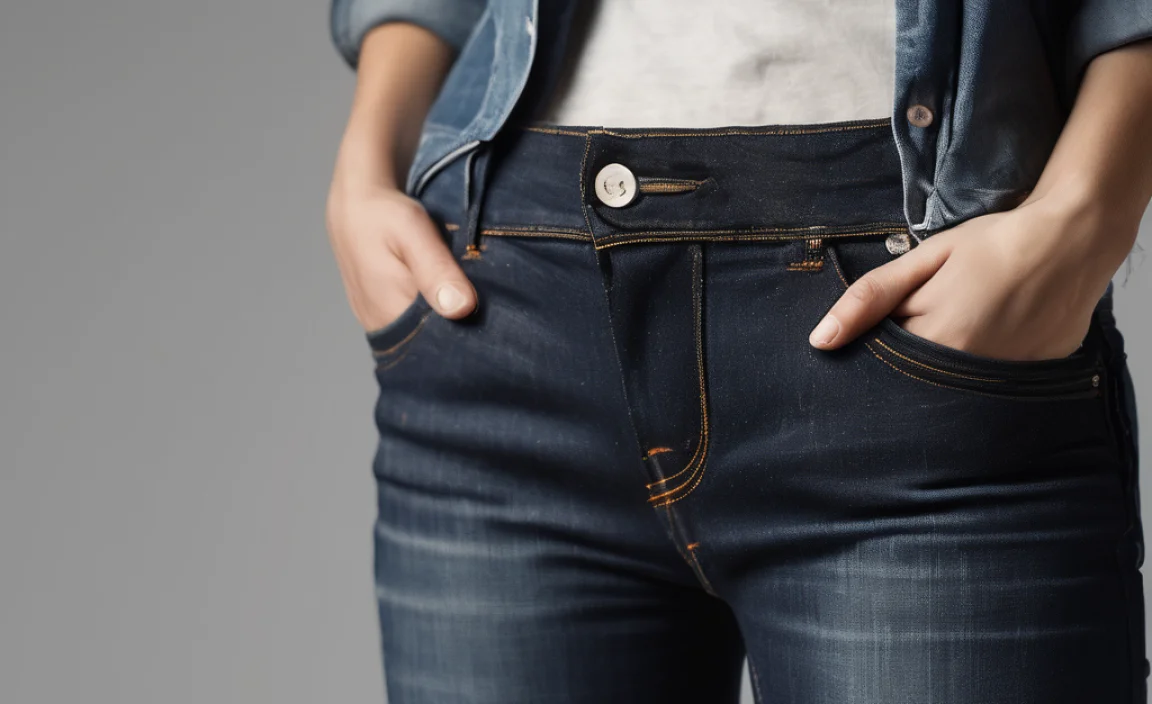
Dark wash jeans are a wardrobe staple, prized for their versatile, deep color. However, this rich hue can be tricky when faced with oily stains like butter. Unlike lighter fabrics where stains might be more visible immediately, butter can soak into the fibers of dark denim, sometimes leaving a dull or slightly discolored patch once it dries. The challenge lies in lifting the oil without stripping the dye that gives your jeans their signature dark wash. This requires a gentle yet effective approach that targets the grease without compromising the fabric’s color integrity.
Understanding Grease Stains on Denim
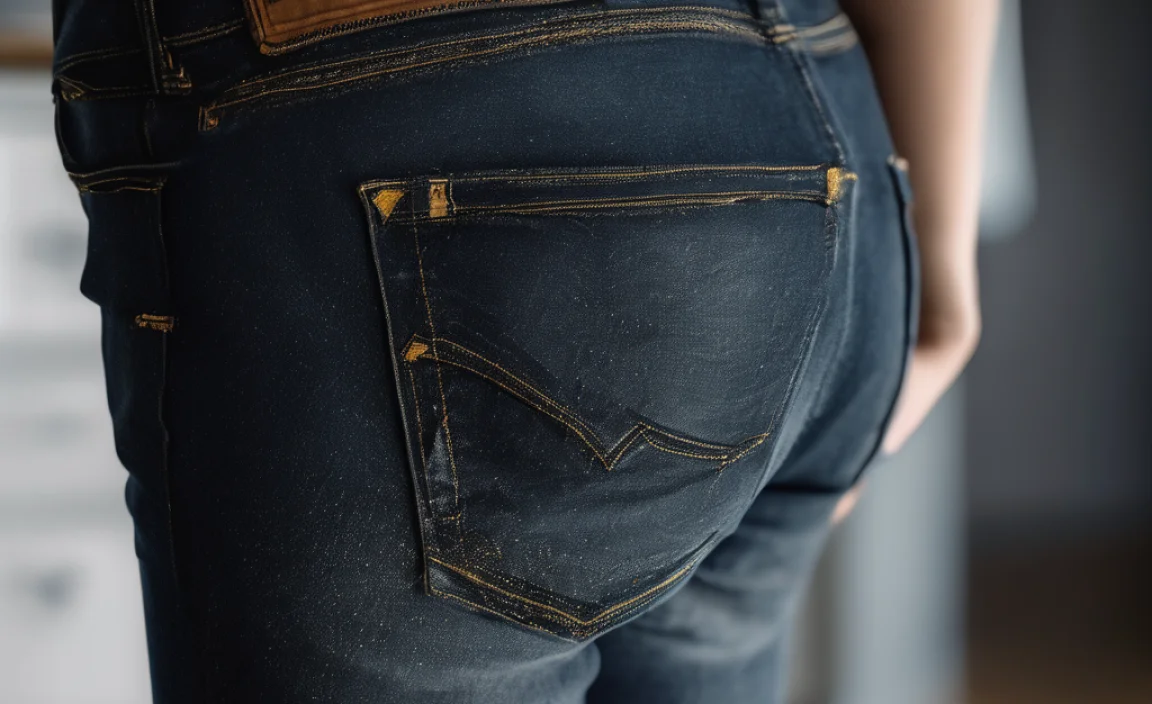
Butter is a lipid, meaning it’s a type of fat. When butter splatters or rubs onto fabric, the oil component penetrates the fibers. On dark wash jeans, this can create a translucent or slightly darker spot that becomes more apparent as the moisture evaporates. The key to removing these stains is to break down the oil so it can be washed away. Standard washing might not be enough because the oil can be hydrophobic, meaning it repels water. Therefore, we need a cleaning agent that can emulsify or break down the grease.
Your Essential Butter Stain Removal Kit
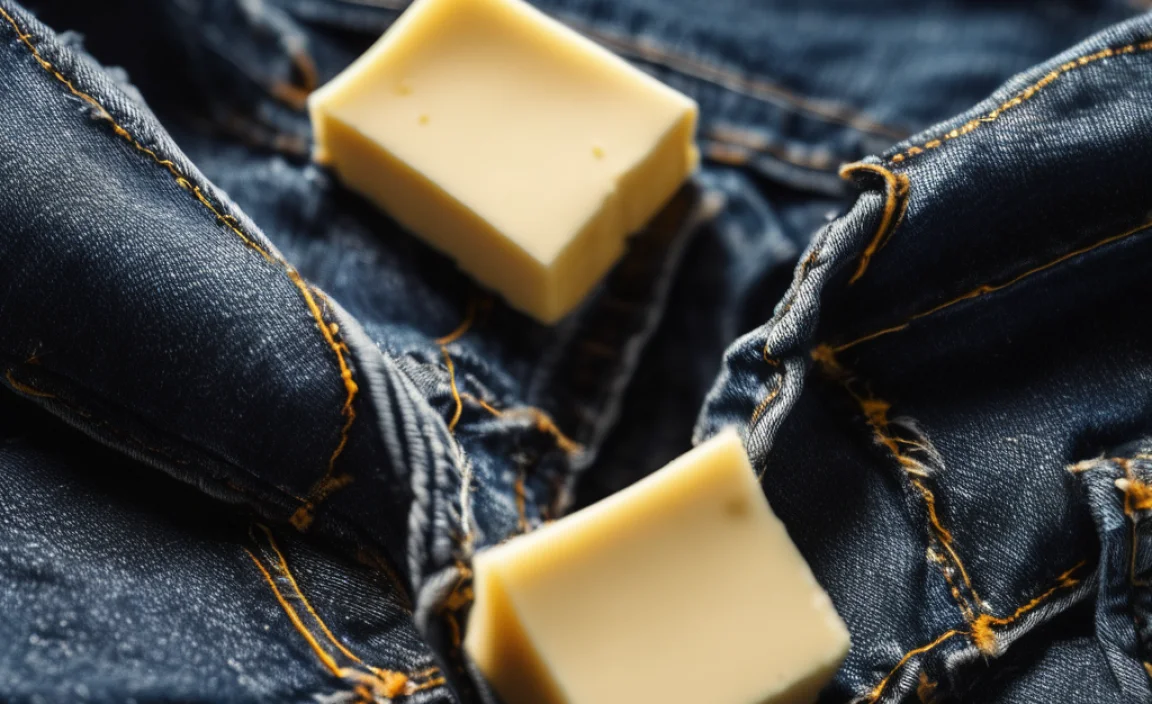
Gathering the right supplies is the first step to a successful stain removal. You likely have most of these items already in your home.
Tools You’ll Need:
Absorbent Material: Paper towels or a clean, white cloth.
Pre-treatment Agent: Dish soap (a grease-cutting variety is best) or a laundry pre-treatment spray specifically for grease.
Gentle Scrubber: An old toothbrush or a soft-bristled brush.
Cold Water: Essential for the initial rinse and throughout the process.
Laundry Detergent: Your usual detergent.
Optional (for stubborn stains): Baking soda or cornstarch.
Why These Items Work:
Dish Soap: It’s specifically formulated to cut through grease on dishes, making it highly effective at breaking down butter stains on fabric.
Paper Towels/Cloth: These are crucial for blotting and absorbing excess butter and cleaning solution, preventing the stain from spreading.
Toothbrush/Soft Brush: Helps to gently work the cleaning agent into the fabric fibers without causing damage or excessive abrasion.
Cold Water: Hot water can set oil stains, making them harder to remove. Cold water is safer for the initial treatment.
Baking Soda/Cornstarch: These are natural absorbents that can help draw out oil from the fabric.
Step-by-Step Guide: How to Remove Butter from Dark Wash Jeans
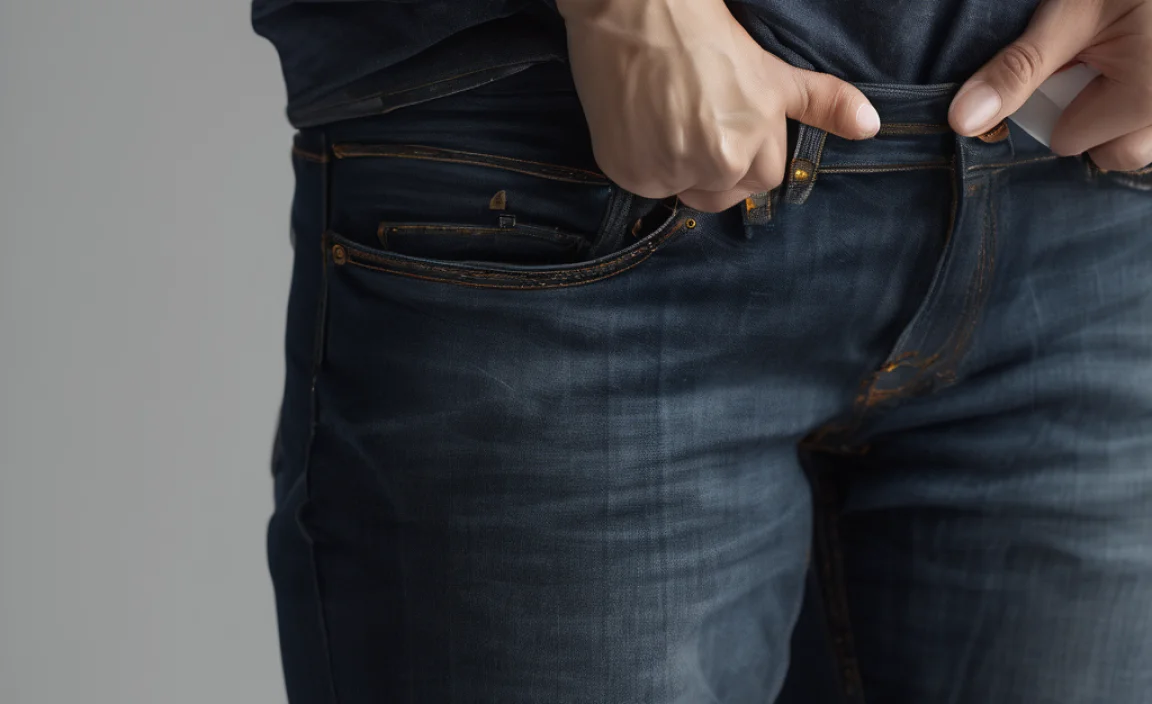
Follow these steps carefully to remove butter stains from your dark wash jeans. Consistency and patience are key.
Step 1: Act Quickly and Blot
The moment you notice a butter stain, it’s time to act. Delaying can allow the butter to set deeper into the denim fibers.
1. Remove Excess Butter: Gently scrape off any solid butter with a dull knife or the edge of a spoon. Be careful not to spread the stain further.
2. Blot, Don’t Rub: Take a clean paper towel or white cloth and gently blot the stained area. The goal is to absorb as much of the surface butter as possible. Rubbing will push the grease deeper into the fabric and could damage the denim.
Step 2: Apply a Grease-Cutting Agent
This is where we tackle the oil directly.
1. Choose Your Cleaner: A good quality dish soap known for its grease-fighting power is your best bet. Alternatively, use a dedicated laundry pre-treatment spray designed for grease stains.
2. Apply Liberally: Apply a generous amount of dish soap directly onto the butter stain. If using a spray, saturate the stained area.
3. Work it In: Gently use your finger or a soft toothbrush to work the soap into the fabric. Move from the outside of the stain inwards to avoid spreading it. Let it sit for 5–10 minutes to allow the soap to break down the butter.
Step 3: Rinse with Cold Water
After the pre-treatment has had a chance to work, rinse out the loosened butter and soap.
1. Rinse Thoroughly: Place the stained area under cold running water. Rinse from the back of the fabric if possible to push the stain out rather than further in.
2. Check the Stain: Blot the area dry with a clean cloth and inspect. If the stain is still visible, repeat Step 2 and Step 3.
Step 4: Optional: Absorb Lingering Grease
If the stain persists after a couple of rounds of pre-treatment, a natural absorbent can help draw out any remaining oil.
1. Apply Absorbent: Sprinkle a generous amount of baking soda or cornstarch over the damp, stained area.
2. Let it Sit: Allow the powder to sit for at least 30 minutes, or preferably a few hours, to absorb any residual grease.
3. Brush Off: Gently brush off the powder with your soft brush or an old toothbrush. You should see that the powder has clumped up, indicating it has absorbed some of the oil.
Step 5: Launder as Usual (with a Twist)
Once you’ve pre-treated the stain and are confident it’s mostly gone, it’s time for the washing machine.
1. Wash in Cold Water: Launder your jeans in cold water using your regular laundry detergent. Avoid hot water, which can set any remaining traces of the stain.
2. Check Before Drying: Crucially, check the jeans for any remaining stain before* putting them in the dryer. Fabric dryer sheets and the heat from a dryer can permanently set any oil stain remnants, making them nearly impossible to remove later.
Step 6: Air Dry and Inspect
If the stain appears to be gone, air dry your jeans. This is the safest way to ensure the stain is completely removed without the risk of heat setting it.
1. Hang to Dry: Hang your jeans to air dry completely.
2. Final Inspection: Once dry, inspect the area where the stain was. If you can no longer see any trace of it, congratulations! Your jeans are saved. If a faint mark remains, you may need to repeat the process, perhaps trying a different pre-treatment agent or allowing the absorbent powder to sit overnight.
Stubborn Stain Solutions: When the First Attempt Doesn’t Quite Cut It
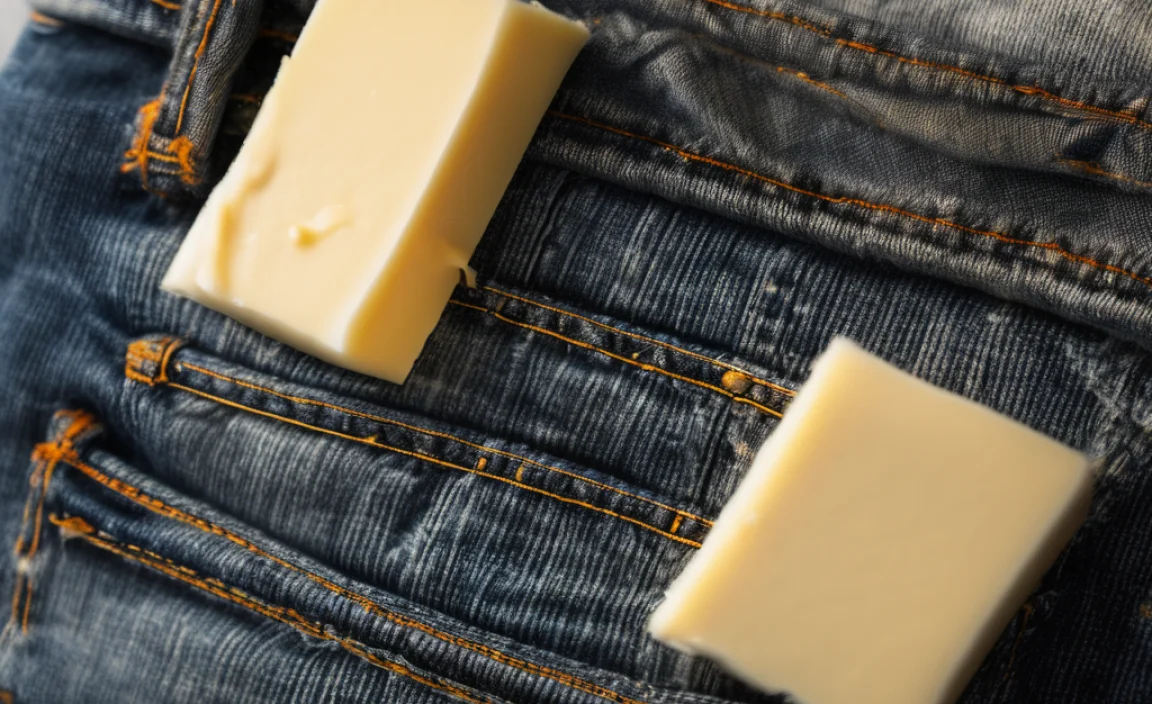
Sometimes, butter stains can be more persistent, especially if they’ve been on the jeans for a while or if the initial treatment wasn’t enough. Here are a few additional tricks to try.
Baking Soda Paste
If plain baking soda or cornstarch didn’t fully do the trick, try making a paste.
1. Mix: Combine baking soda with a small amount of water to form a thick paste.
2. Apply: Apply this paste directly to the stain and let it dry completely.
3. Brush and Wash: Once dry, gently brush off the paste and launder as usual in cold water.
Rubbing Alcohol (for Dark, Colorfast Denim)
For particularly tough grease stains on dark wash jeans that you’re confident are colorfast (meaning the dye doesn’t bleed easily), rubbing alcohol can be effective. Always test this on an inconspicuous area first.
1. Test: Apply a small amount of rubbing alcohol to an inside seam or hem and let it dry to check for color removal.
2. Apply: If the test is successful, dampen a clean cloth with rubbing alcohol and gently blot the stain.
3. Rinse and Wash: Rinse the area thoroughly with cold water and then wash the jeans as usual.
OxiClean or Similar Oxygen Bleach
Oxygen bleach products, like OxiClean, can be very effective at breaking down stains without harsh chemicals.
1. Soak: Dissolve the recommended amount of oxygen bleach in a basin of cool water.
2. Soak Jeans: Submerge your jeans in the solution and let them soak for at least a few hours, or even overnight for very stubborn stains.
3. Wash: Launder as usual.
Important Considerations for Dark Wash Jeans
Protecting the rich color of your dark wash jeans is paramount. Here are a few key considerations to keep in mind.
Testing for Colorfastness
Before using any strong cleaning agent or method that involves rubbing, it’s always wise to test for colorfastness.
1. Find an Inconspicuous Area: Look for an inside seam, hem, or pocket lining.
2. Apply and Blot: Dab a small amount of your chosen cleaning solution (dish soap, alcohol, etc.) onto the test area with a cotton swab.
3. Observe Fabric and Swab: Wait a minute, then blot the area with a clean white cloth. Check both the fabric and the cloth for any signs of dye transfer or fading. If color transfers to the cloth or the fabric looks faded, proceed with extreme caution or opt for a milder method.
Avoiding Harsh Chemicals
Bleach (chlorine bleach), while a powerful whitener, can also strip the color from your dark wash jeans, leaving behind unsightly pale patches. Avoid chlorine bleach entirely when dealing with butter stains on dark denim. Stick to the gentler, grease-cutting methods.
The Danger of Heat
As mentioned, heat is your enemy when it comes to oil stains. The dryer’s heat, and even hot wash water, can bond the oil to the fabric fibers, making removal incredibly difficult, if not impossible. Always aim to treat and wash oil stains in cool temperatures and air dry until you are 100% sure the stain is gone.
Frequently Asked Questions About Butter Stains on Jeans
Here are some common questions people have when dealing with butter stains on their favorite dark wash jeans.
Q1: How quickly should I treat a butter stain on my jeans?
A: Treat it as soon as possible. The fresher the stain, the easier it will be to remove before the butter soaks deeply into the fabric fibers.
Q2: Can I use regular laundry detergent to remove butter stains?
A: Regular laundry detergent can help, but it’s often not enough on its own for an oily stain like butter. A grease-cutting dish soap or a specialized laundry pre-treater applied before washing is much more effective at breaking down the oil.
Q3: What if the stain is old and dried?
A: Old butter stains are tougher, but not impossible. Start with a good pre-treatment of dish soap, letting it sit for longer (up to 15-20 minutes), and consider using the baking soda absorbency method. You might need to repeat the process a few times.
Q4: Will this method remove the dark color from my jeans?
A: The methods described focus on lifting the oil without damaging the denim’s dye. Using cold water and avoiding harsh chemicals like chlorine bleach are key to preserving the dark wash. Always test any new product or method on an inconspicuous area first.
Q5: Is it safe to use baking soda on dark jeans?
A: Yes, baking soda is a gentle absorbent and mild abrasive that is generally safe for most fabrics, including dark wash jeans. It helps to draw out oils without stripping color when used as directed.
Q6: What is the best way to dry my jeans after treating a butter stain?
A: Always air dry your jeans after treating a butter stain until you are certain the stain is gone. The heat from a dryer can set any remaining oil residue, making it permanent.
Q7: Can I use a stain remover pen or wipe?
A: Some stain remover pens and wipes are designed for grease. These can be a good option for on-the-go emergencies. For butter stains, look for one specifically formulated to tackle oil and grease. However, for a significant stain, the methods outlined above are generally more effective.
Maintaining Your Dark Wash Jeans
Beyond stain removal, proper care will help your dark wash jeans maintain their color and shape for years to come.
Washing Whites and Darks Separately
This is a golden rule for keeping dark denim looking its best. Washing darks with whites will inevitably lead to color transfer, dulling your dark jeans and dinging up your lighter items. Always segregate your laundry loads by color.
Washing Inside Out
Washing your jeans inside out protects the outer surface from abrasion during the wash cycle. This helps to preserve the color saturation and prevent premature fading, especially in high-wear areas like the knees and seat.
Using Cold Water
As we’ve emphasized, cold water is the preferred temperature for washing dark wash jeans. It helps to prevent the dyes from bleeding and reduces shrinkage. Hot water can break down the fabric fibers over time and cause colors to fade more rapidly.
Gentle Detergents
Opt for a detergent that is specifically designed for dark colors or is otherwise mild. Avoid detergents with added bleach or optical brighteners, as these can strip color.
Air Drying
Whenever possible, air dry your dark wash jeans. Line drying outside can be beneficial, as sunlight can help naturally disinfect and freshen them. If you must use a dryer, opt for the lowest heat setting and remove them while slightly damp to prevent over-drying and potential shrinkage or color damage. For stain removal, air drying is non-negotiable until the stain is fully gone.
Conclusion: Restoring Your Denim Confidence
Dealing with a butter stain on your favorite dark wash jeans doesn’t have to be a cause for panic. By acting quickly, using the right tools – like a good grease-cutting dish soap and some absorbent paper towels – and following these straightforward steps, you can effectively lift that oily residue. Remember to always prioritize cold water and air drying to protect the rich color of your denim. With a little patience and the right approach, your jeans will be back to their handsome, deep indigo glory, ready for whatever the day brings. So, don’t let a little butter run your day – or your denim’s look!


